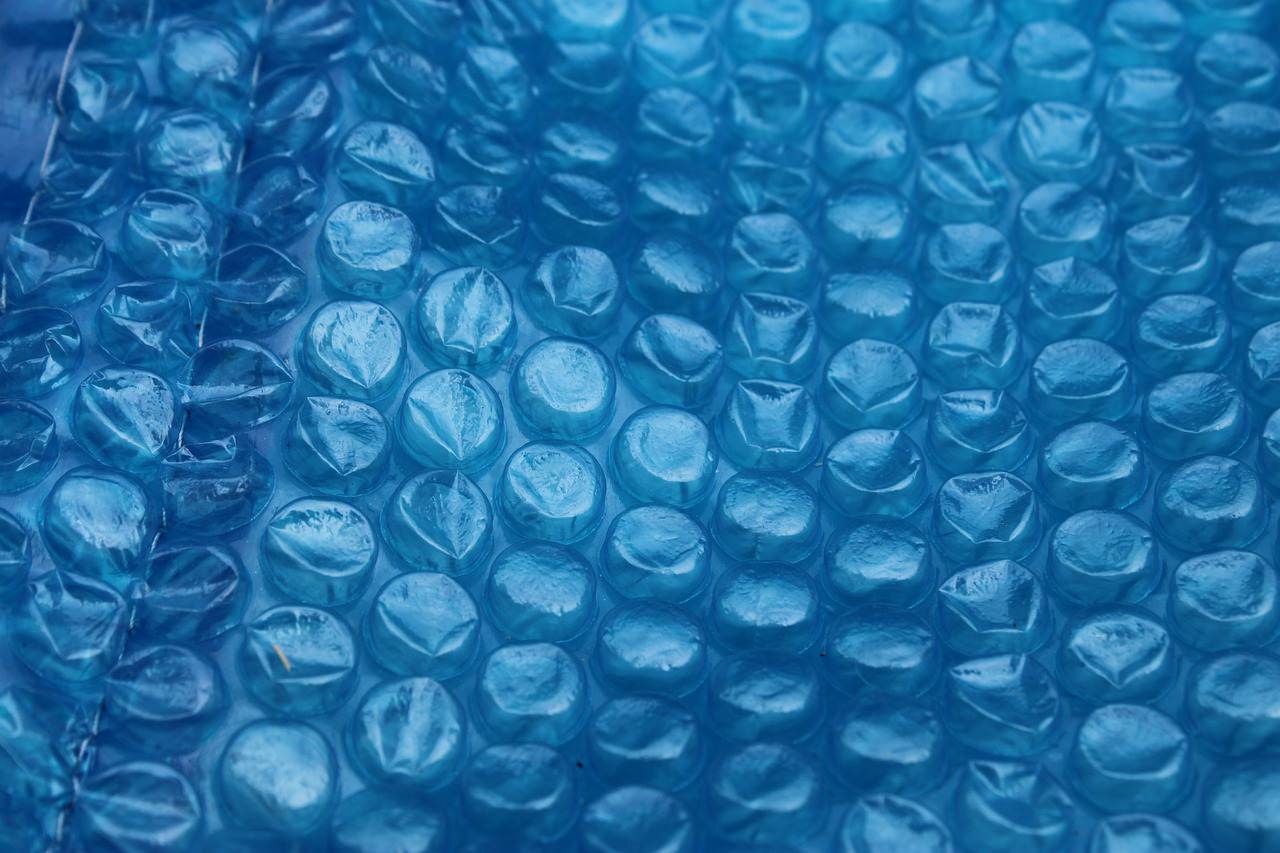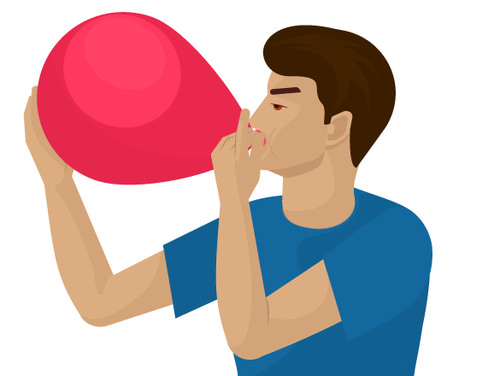2.25 Boyle法
章节大纲
-
Are you one of those people who can’t resist popping the bubbles of bubble wrap? As annoying as it might be to the people around you, do you just love to squeeze those little plastic bubbles? Before the bubbles pop, the air pressing against the inside of the bubbles inflates them like tiny balloons. When you pop the bubbles, most of the air rushes out.
::你是那些无法抗拒泡沫包装泡沫的人之一吗?尽管对周围的人来说可能很烦人,但你还是喜欢挤压那些小塑料泡沫吗?在泡沫爆出之前,气压在泡沫内部的气压像小气球一样充斥着它们。 当你吹泡气泡时,大部分空气就会涌出。Pop Goes the Bubble!
::Popes去泡泡了!What does popping bubble wrap have to do with science ? Actually, it demonstrates an important , called Boyle’s law . Like other laws in science, this law describes what always happens under certain conditions. Boyle’s law is one of three well-known laws, which state the relationships among , volume , and pressure of gases. (The other two gas laws are Charles’ law and Amontons’ law.) According to Boyle’s law , if the temperature of a gas is held constant, then decreasing the volume of the gas increases its pressure—and vice versa. That’s what happens when you squeeze the bubbles of bubble wrap. You decrease the bubbles' volume, so the air pressure inside the bubbles increases until they pop.
::泡沫泡沫包装与科学有什么关系? 事实上,它展示了一个重要的法律 — — 叫做博伊勒的法律。 与科学中的其他法律一样,这部法律描述了在某些条件下总是会发生的事情。 博伊尔的法律是三种众所周知的法律之一,它说明了气体、数量和压力之间的关系。 (另外两种气体法是查尔斯的法律和阿蒙顿的法律。 )根据博伊尔的法律,如果一个气体的温度保持恒定,那么降低气体的气量就会增加压力 — — 反之亦然。 这就是你挤压泡沫包装泡沫时发生的情况。 你减少气泡的气泡数量,因此气泡中的气压会增加,直到气泡产生。“Father” Boyle
::“父亲”BoyleBoyle’s law is named for Robert Boyle, the English scientist who discovered this relationship between gas volume and pressure. Boyle based the law on his own controlled . He published his results, along with detailed descriptions of his procedures and , in the 1660s. These steps were unheard of in his day. Mainly because of his careful research and the details he provided about it, Boyle has been called the “father of modern chemistry .”
::博伊勒的法律被命名为罗伯特·博伊勒(Robert Boyle ) , 他是英国科学家,他发现了天然气量和压力之间的关系。 博伊勒以他自己控制的法律为基础。 他公布了他的结果,并详细描述了他的程序,在1660年代。 这些步骤在他这一天从未听说过。 主要是因为他仔细的研究以及他所提供的细节,博伊勒被称为“现代化学之父 ” 。It’s Crowded in Here
::聚集在这里的人群Imagine a container of gas molecules like the one in the Figure . The container in the sketch has a lid that can be pushed down to shrink the volume of the gas inside. Notice what happens as the lid is lowered. The gas molecules crowd closer together because there is less space for them to occupy and they have nowhere else to go. Gas molecules have a lot of . They are always moving and bouncing off each other and anything else in their path. When gas molecules bump into things, it creates pressure. Pressure is greater when gas molecules occupy a smaller space, because the greater crowding results in more collisions. In other words, decreasing the volume of a gas increases its pressure.
::想象一下像图中的气体分子的容器。 草图中的容器有一个盖子, 可以推下来缩小气体的体积。 注意盖子降低后会发生的情况。 气体分子聚集在一起, 因为它们占据的空间较少, 也无处可去。 气分子有很多。 气体分子总是在移动, 相互跳动, 以及在其路径中的其他任何东西。 当气体分子碰到东西时, 它会产生压力。 当气体分子占据一个较小的空间时, 压力会更大, 因为更多的聚集导致更多的碰撞。 换句话说, 减少气体的体积会增加压力 。You Go Up and I’ll Go Down
::你上上我下下As the volume of gas in the container pictured in the Figure gets smaller, the pressure of the gas molecules becomes greater. When two variables change in opposite directions like this, the variables have an inverse, or “upside-down,” relationship.
::随着该图所描绘的容器中气体的体积逐渐缩小,气体分子的压力也越来越大。 当两个变量朝着相反的方向变化时,变数具有反向或“反向”关系。Q: How could you show an inverse relationship with a graph? Sketch a graph to show what the relationship between gas volume and pressure might look like. Let the x-axis represent volume (V) and the y-axis represent pressure (P).
::问题 : 您如何显示与图表的反向关系 ? 绘制一个图表以显示气体体积和压力之间的关系。 让 x 轴代表音量 (V) , Y 轴代表压力 (P) 。A: Did you sketch a graph like the one in the Figure ? Let’s see why this graph is correct. Find the point on the line where volume is smallest. That’s were pressure is highest. Then find the point where volume is largest. That’s where pressure is lowest. Whenever you see a graph with this shape, it usually represents variables that have an inverse relationship, like gas volume and pressure.
::A: 您像图中的图一样绘制了一个图表吗? 让我们看看为什么这个图表是正确的。 在线条上找到量最小的点。 这是最高的压力。 然后找到量最大的点。 这就是压力最小的地方。 当你看到这样形状的图时, 它通常代表反向关系变量, 如气体量和压力。Summary
::摘要-
Boyle’s law states that if the temperature of a gas is held constant, then decreasing the volume of the gas increases its pressure.
::Boyle的法律规定,如果气体温度保持不变,那么减少气体的体积就会增加其压力。 -
When gas molecules bump into things, it creates pressure. Pressure is greater when gas molecules occupy a smaller space, because greater crowding results in more collisions. This explains why decreasing the volume of a gas increases its pressure.Explore More
::当气体分子撞上东西时,它会产生压力。当气体分子占据较小空间时,压力会更大,因为更大的挤压会导致更多的碰撞。这解释了减少气体体积会增加压力的原因。
Resources
::资源Review
::回顾-
State Boyle’s law.
::州博伊尔州的法律。 -
Explain why the pressure of a gas increases when its volume decreases.
::解释为什么气体在数量减少时压力会增加。 -
Imagine blowing up a latex balloon. Assume that you tie the balloon to prevent air from escaping and then squeeze the balloon with one hand, so there is less space inside it. Then assume you use both hands (and maybe a friend’s hands) to squeeze the balloon so there is even less space inside. What do you think will happen to the balloon if you keep squeezing it to a smaller and smaller volume? Explain your prediction.
::想象一下炸掉一个乳胶气球。假设你绑住气球以防止空气逃逸,然后用一只手挤压气球,那么气球内的空间就更少了。 然后假设你用两只手(或者朋友的手)挤压气球,这样气球内的空间就更少了。 你认为气球如果一直挤压到一个较小和较小的体积,会发生什么后果?解释你的预测。
-
Boyle’s law states that if the temperature of a gas is held constant, then decreasing the volume of the gas increases its pressure.



